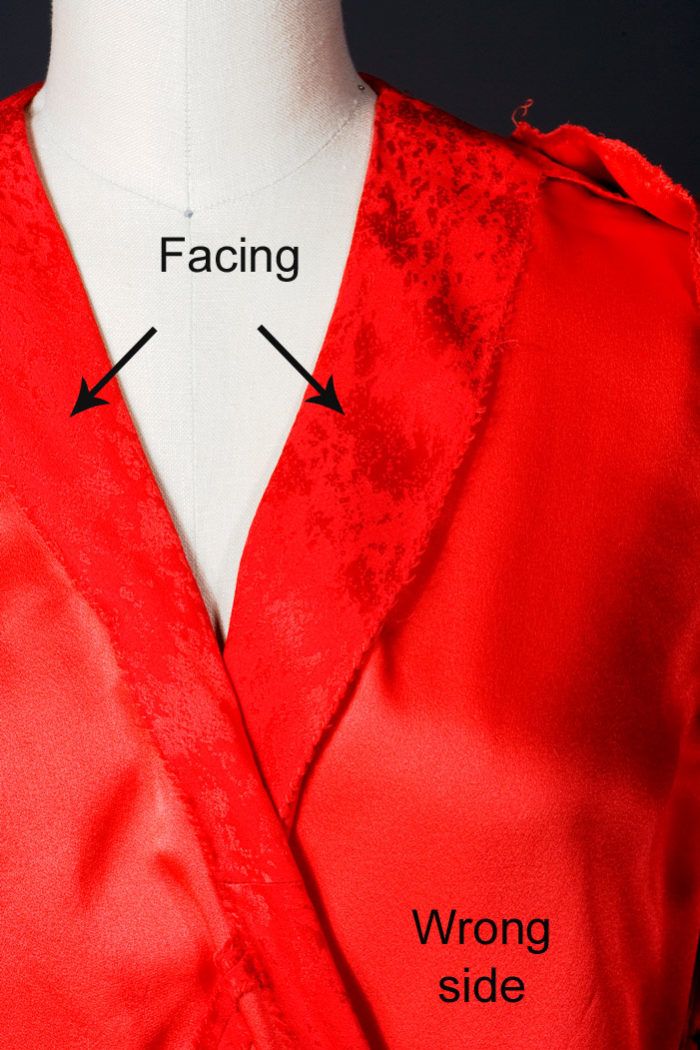
The purpose of most stays is to stabilize the edge, preserve the lines of the design, and prevent the edge from stretching out of shape. This is particularly important on designs with surplice and V necklines.
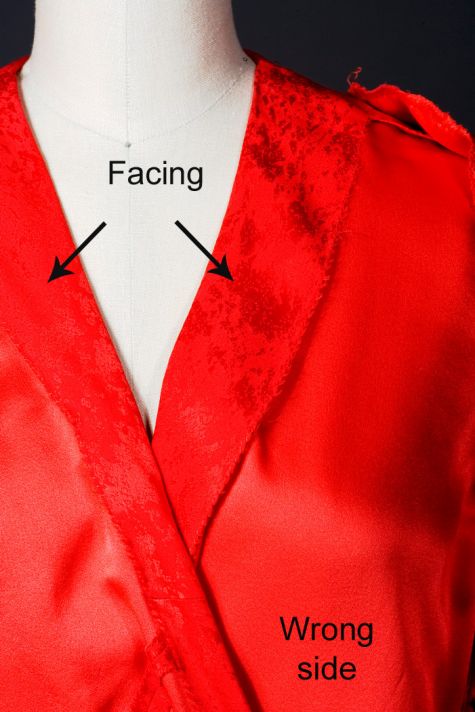
The surplice neckline of this Dior dress has a a folded edge on the bias with an extended facing instead of a seam at the edge with a separate facing, Without a stay, the edge will gap unattractively when the garment is worn.
Most stays are made of seam binding, woven stay tape, or lightweight selvage which have a plain weave and no stretch. On this dress, a strip of bias-cut organza was used instead, so the folded edge would have a soft roll instead of a hard crease. Since bias is known for its stretch, the strip had been pressed to remove all stretch.
I used this technique on a Custom Couture pattern (7658) I designed for Vogue Patterns many years ago, but you can use it on any surplice or V neckline.
The directions are simple.
1. Mark the foldline at the neck edge with thread tracing (an uneven basting stitch).
2. When you try on the garment, adjust the basting as needed so the neck edge doesn’t gap.
3. Cut a bias strip of organza the desired length and about 2 inches wide.
4. Wet the strip and press to remove all the stretch.
5. With the garment wrong side up, center the strip over the basting at the neck edge, as shown below.
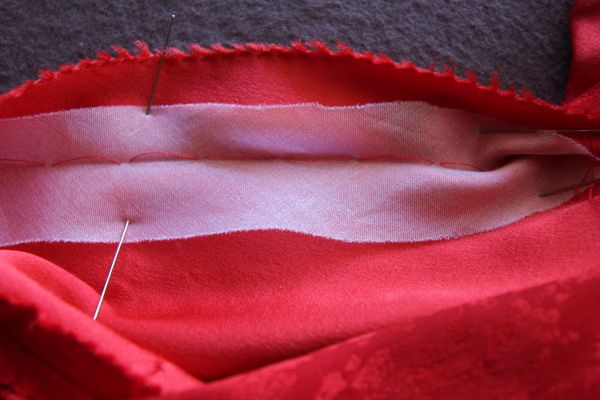
6. Sew the strip permanently with a running stitch, working carefully to be sure the stitches don’t show on the right side of the bodice.
Have you tried this or similar techniques to stabilize edges? Do you have any of your own that you’d like to share?



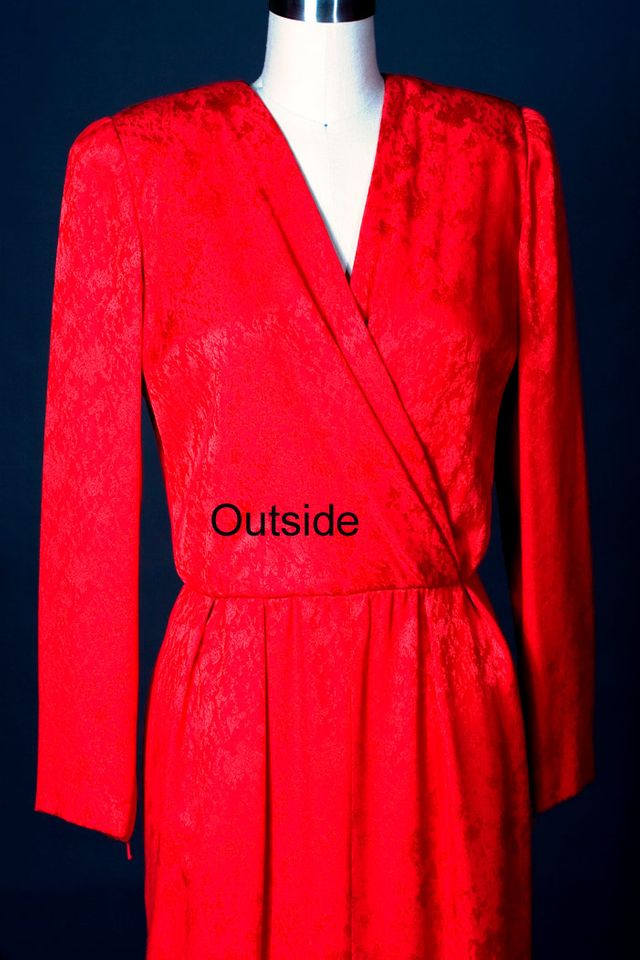
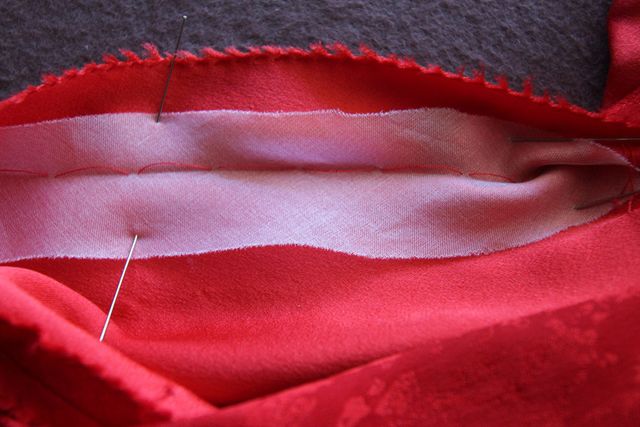
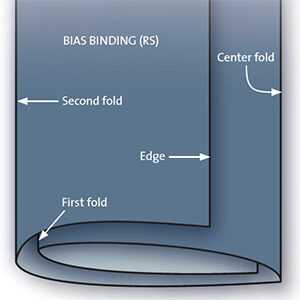
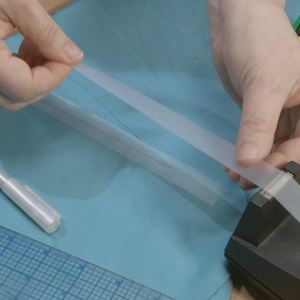
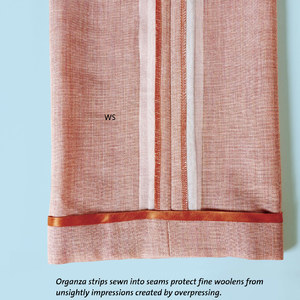


























Hmmm that final instruction... "sew the strip" begs more detail for me. Exactly WHERE to you place the running stitch relevant to the bias tape edges, and to the facing crease
Do you sew the running stitch on the edge of the bias tape at the facing side, catching the facing? Or just to the wrong side of the crease? One more picture of where those stitches are placed would have been very helpful! Loved the idea of using organza...
Karen, if you can enlarge the photo greatly, as with an ipad, you can see the stitches running right ON the foldline.
Claire, thanks for that geat tip. I have wondered about the possibility of something like that for years, but never really tried it. But you went ahead and actually did it. Kudos.
Claire,
"Step 4: Wet the strip and press to remove all the stretch."
When pressing, do you stretch the bias out at all? Or does the very act of wetting and pressing ensure that the stretch leaves?
(I did actually attempt to answer this question myself, by consulting one of your books, but did not find it. Knowing me, I probably just overlooked it.)
Thank you for this great information!
Wonderful technique Claire. Thank you for sharing. Can this method also be applied to the inside of a dress strap of 1cm wide or more?
Olivia.
My favourite way to stabilize bias edges or stretch fabrics is to use the selvege of organza or chiffon.
When ever I make an outfit with these fabrics I always save the selveges, they are lovely and lightweight and they don't create any bulk at all.
I just place it on the stitch line.
Claire: I've made your couture Vogue dress.
LadyA, yes, you stretch the bias and press it stretched.
Karen, I usually sew with a blindstitch instead of a running stitch because it's much easier to sew without getting dimples on the outside.
The bias is place on the foldline and so are the stitches.
I am sewing a wrap dress and really appreciate you instructions, you are a jewel!
I would like to finish the facing with seamsgreat but I've never used it before. I don't like the fold when I press things, and I want a clear, soft finish. Can you help?
Seams great to finish seams--
I'm not a big fan of Seams great and other bindings as a seam finish unless the fabric is heavy or bulky. On lightweight fabrics, the binding may show on the right side.
My first choice is overcasting by hand but because it requires a lot time, that's not practical. I've seen zigzag finishes on some couture garments. Experiment with this the width and length until you can get a nice flat finish. I would start with a w,2-l,2.
Hollibelle,
I also save selvages of lightweight fabrics. Many years ago, I had a large bunch hanging on a pegboard in my sewing room. My husband came in, looked at it, and asked if I wanted him to throw the bunch away.
Needless to say, I told him, "no thank you."
Lady A, yes, when you press, you try to remove all of the stretch. I also do the same on lengthwise strips.
What type of organza? silk, cotton, poly ?
And where can a purchase good quality organza?
We lack sewing stores where I live and have a hard time getting quality items.